If one out of every 500 people who visits RSN on a monthly basis clicked the donation link and made a donation we could cut fundraising in half. That’s how little it takes, that’s how much it means.
Totally doable.
Marc Ash
Founder, Reader Supported News
If you would prefer to send a check:
Reader Supported News
PO Box 2043 / Citrus Heights, CA 95611
Follow us on facebook and twitter!
Live on the homepage now!
Reader Supported News
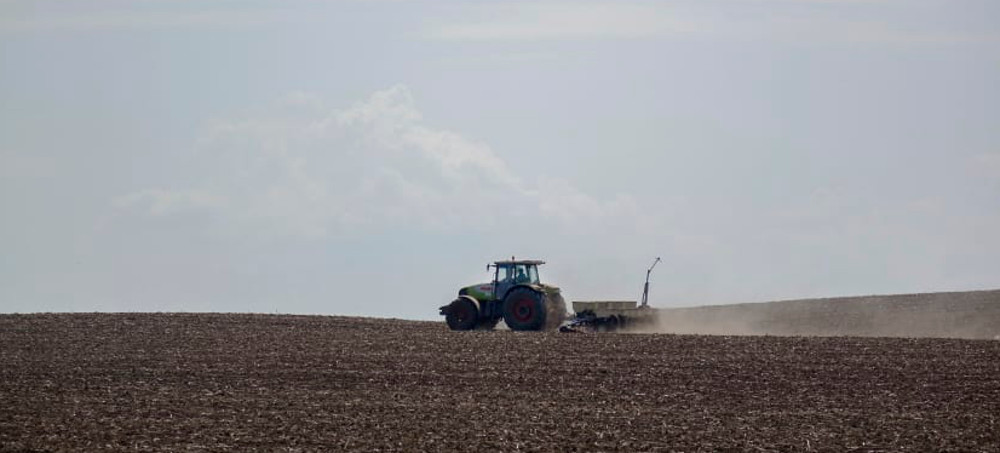 'Russia's war on Ukraine has sent food prices skyrocketing, leaving millions at risk of going hungry.' (photo: Vincent Mundy/Getty)
'Russia's war on Ukraine has sent food prices skyrocketing, leaving millions at risk of going hungry.' (photo: Vincent Mundy/Getty)
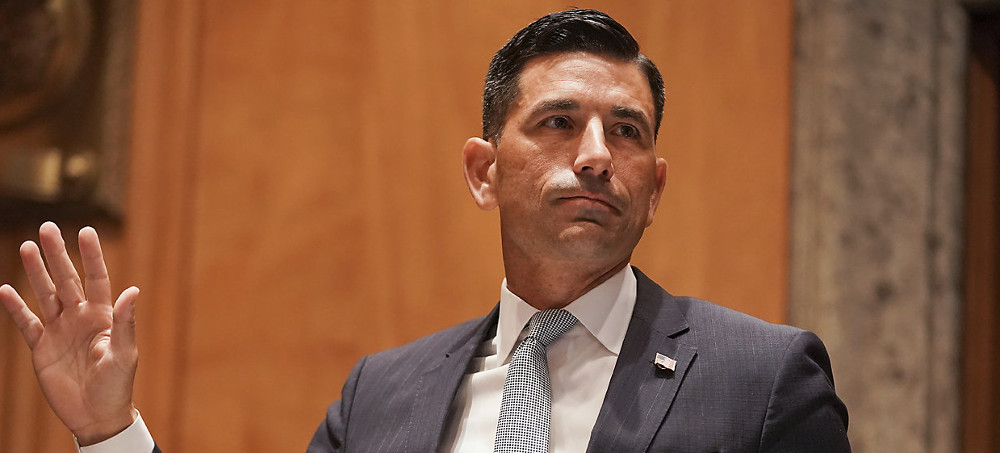 Acting Secretary of the Department of Homeland Security, Chad Wolf, is sworn in during his Senate Homeland Security and Governmental Affairs Committee confirmation hearing. (photo: Greg Nash/AP)
Acting Secretary of the Department of Homeland Security, Chad Wolf, is sworn in during his Senate Homeland Security and Governmental Affairs Committee confirmation hearing. (photo: Greg Nash/AP)
The internal watchdog also found DHS employees made additions to the report about China and Iran “that appear to be based in part on political considerations."
The DHS inspector general report also found that employees of DHS’s Office of Intelligence and Analysis made changes to the analysis of foreign election interference “that appear to be based in part on political considerations, potentially impacting I…A’s compliance with Intelligence Community policy.”
The report also found that the appointee, acting Secretary Chad Wolf, who is not named, “participated in the review process multiple times despite lacking any formal role in reviewing the product, resulting in the delay of its dissemination on at least one occasion.”
In a statement to NBC News Wednesday, Wolf said the report “supports my longstanding position on this matter,” and that the IG “did not find any credible evidence that I directed anyone to change the substance of the report because it ‘made President Trump look bad.’” Also, he added, “buried in the report is the fact that the grossly false whistleblower complaint against me was withdrawn.”
At issue was an intelligence analysis stating that “Russian malign influence actors” were spreading unsubstantiated allegations about the health of then-candidate Joe Biden to reduce voters’ confidence in him. The product said Russia was using both overt and covert channels and linked the efforts to similar operations during the 2016 presidential election.
The release of the paper was delayed on Wolf’s orders, the inspector general’s report says. Other officials added a so-called tone box describing efforts by Chinese and Iranian influence actors to promote unsubstantiated narratives questioning the mental health of then-President Donald Trump.
“The tone box is the only part of the product where Iran and China, as well as President Trump, are discussed,” the inspector general’s report says.
The report was sparked by a whistleblower complaint, covered at the time by NBC News. The written complaint by Brian Murphy, who was a top DHS intelligence analyst, accused top DHS officials of blocking analysis of Russian election interference, watering down intelligence reports about corruption and violence fueling a refugee flow from Central America, and “modify[ing] assessments to ensure they matched up with the public comments by President Trump on the subject of ANTIFA and ‘anarchist’ groups.”
The inspector general’s report says investigators were not able to conclude that Wolf or other officials acted out of political motives. Instead, it concludes their actions created the perception of politicization.
“DHS did not follow its standard process and requirements when editing and disseminating an I…A intelligence product regarding Russian interference with the 2020 U.S. Presidential election. The Acting Secretary disrupted dissemination of the product when he asked for the product to be ‘held’ during the July 8 meeting,” the report says.
“This resulted in a delay in the dissemination of an intelligence product intended to inform stakeholders about foreign influence efforts relating to the 2020 U.S. Presidential election.”
The inspector general’s report noted that an ombudsman within the DHS intelligence office also questioned whether the intelligence report had been politicized.
“Given the structure, vagueness, and use of a ‘balancing’ tone box, there are some questions about objectivity and freedom from political consideration,” the ombudsman concluded, according to the report.
(Correction: May 4, 2022, 4:38 p.m.) A previous version of this article and a headline misstated how many times an IG report said then-Acting DHS Secretary Chad Wolf delayed the release of an intelligence report. It was at least once, not twice. (The IG attributed the second delay to Wolf’s chief of staff.)
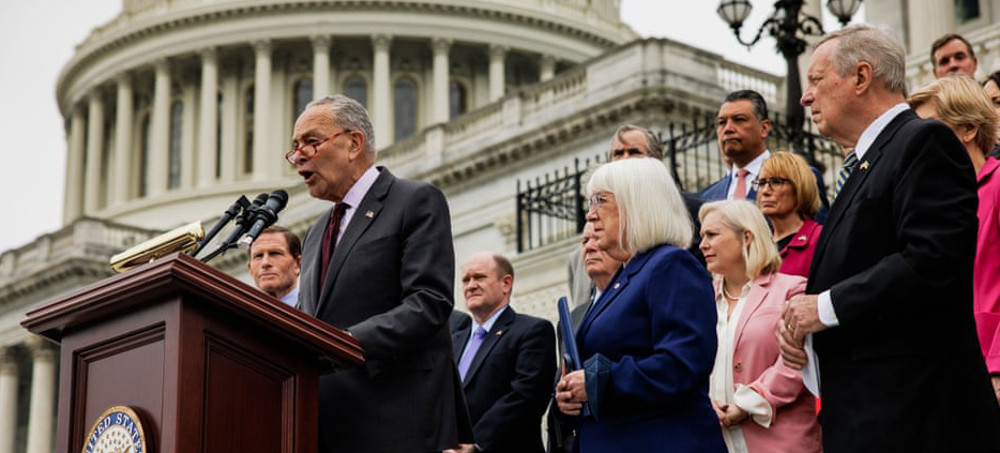 The Senate majority leader, Chuck Schumer, alongside the Senate Democratic Caucus, denounces the draft decision leaked from the US supreme court that would over turn Roe v Wade at the US Capitol this week. (photo: Rex/Shutterstock)
The Senate majority leader, Chuck Schumer, alongside the Senate Democratic Caucus, denounces the draft decision leaked from the US supreme court that would over turn Roe v Wade at the US Capitol this week. (photo: Rex/Shutterstock)
Despite controlling the White House and Congress, Democrats seem powerless to fight the assault on Roe v Wade but hope it will energise midterm voters
“Do something, Democrats,” the crowd chanted at one point.
In the hours that followed, Democrats, who currently control the House, the Senate and the White House, echoed their outrage and vowed a response.
The urgency follows a leak late on Monday evening of a draft opinion from the court that a majority of the nine judges on the bench – all conservative-leaning appointees of Republican presidents – support not just more restrictions on abortion services but the overturning of the landmark Roe ruling that guarantees the right to abortion when final opinions are issued in June.
“I am furious – furious that Republicans could be this cruel, that the supreme court could be this heartless, that in legislatures across the country, extreme Republicans are ready for their trigger bans to go into effect,” Senator Patty Murray, a Democrat of Washington and a longtime advocate of women’s reproductive rights, said.
Speaking from the steps of the US Capitol, she was referring to states that have legislative bans on abortion prepared and waiting to be “triggered” into effect as soon as Roe is overturned.
“It is craven and we won’t stand for it,” she said. “I’m not going to sit quietly and neither should any of you.”
Yet, infuriatingly for the pro-choice voters who helped elect Joe Biden and a Democratic Congress, the party finds itself largely powerless at present, without a legislative path forward to protect abortion rights in the likely event the court reverses its decision in Roe.
Biden said it would be a “radical decision” by the court and called on Congress to act to enshrine the rights afforded by Roe into federal law via legislation.
And Vice-President Kamala Harris, speaking to attendees at a gala hosted by Emily’s List, which works to elect Democrats who support abortion rights, railed that a ruling overturning Roe would be a “direct assault on freedom” in America.
Barring swift legislative action, nearly half of US states are likely to ban abortion or severely restrict access to the procedure.
But the reality of Democrats’ thin congressional majorities is that they don’t have enough support in the evenly divided US Senate to codify abortion protections, nor do they have the votes to eliminate the so-called filibuster rule, thus allowing legislation to pass with a simple majority.
Biden has resisted pressure from progressives to use his bully pulpit to call for eliminating the filibuster, following recent demands to do so to pass voting rights legislation. And on Tuesday, he said he was “not prepared” to do so to protect reproductive rights.
Nevertheless, the Senate majority leader, Chuck Schumer, a New York Democrat, vowed to forge ahead with a vote on current legislation that is stalled in Congress but, if it could be passed would enshrine a woman’s right to end her pregnancy.
But the measure, a version of which passed the Democratic-controlled House last year, was already rejected once this year, when it fell far short of the 60 votes needed to break a filibuster. It didn’t even win the support of all 50 Democrats, so even if the filibuster were scrapped the bill, called the Women’s Health Protection Act, would not have passed in the Senate.
Senator Joe Manchin, an anti-abortion Democrat from West Virginia, voted with Republicans to block consideration of the bill. The bill also failed to attract the support of two pro-choice Senate Republicans, Susan Collins of Maine and Lisa Murkowski of Alaska, who have introduced separate legislation that they say would codify Roe.
Yet Schumer argued that it was important to put every senator on the record.
“A vote on this legislation is no longer an abstract exercise. This is as urgent and real as it gets,” he said.
The leaked draft decision, written by the conservative justice Samuel Alito, would shift the question of whether abortion should be legal to the individual states.
The effect would dramatically alter the US landscape almost overnight, with restrictions and bans going into effect across much of the south and midwest while abortion would remain legal in many north-eastern and western states.
Emboldened by the supreme court’s conservative super-majority, Republican legislatures have enacted a flurry of new abortion laws as conservative activists begin to lay the groundwork for a nationwide ban.
On Tuesday, as the country reeled from the revelation that the supreme court was likely to dismantle Roe, Oklahoma’s Republican governor signed into law a bill that would ban abortions after six weeks of pregnancy, a copycat version of a Texas law enacted last year.
Meanwhile, liberal states have moved to safeguard abortion protections. Last week, Connecticut lawmakers approved a bill that would protect abortion providers in the state. And states like California and New York have vowed to be a “sanctuary” for people seeking reproductive care from places where the procedure is banned.
With few options, Democrats have implored Americans shocked and angered by the seemingly impending loss of abortion rights to vote in the midterm elections. Majorities of Americans say they want abortion to remain legal in some or most cases. Few say they want the court to overturn Roe.
But Democrats face steep headwinds in November, weighed down by Biden’s low approval ratings, rising inflation and a sour national mood.
The Republican reaction to the news that the nation’s highest court was prepared to strike down Roe was relatively subdued. In the Senate, lawmakers were far more focused on the source of the leaked document than the decision, which is the culmination of a decades-long drive by the conservative movement to overturn Roe.
The response suggested that there may be some concern that Republicans are worried about provoking a political backlash among more moderate and independent voters who broadly support a constitutional right to abortion.
“There’s an answer,” the Illinois senator Dick Durbin, the majority whip, said at a press conference. “The answer is in November.”
But many Democrats and activists believe November is too late for millions of women in states where abortion will banned almost immediately. They want the party – from the president on down – to throw every ounce of their political capital at finding a legislative solution.
“People elected Democrats precisely so we could lead in perilous moments like these- to codify Roe, hold corruption accountable, … have a President who uses his legal authority to break through Congressional gridlock on items from student debt to climate,” Congresswoman Alexandria Ocasio-Cortez, a progressive Democrat from New York, wrote on Twitter. “It’s high time we do it.”
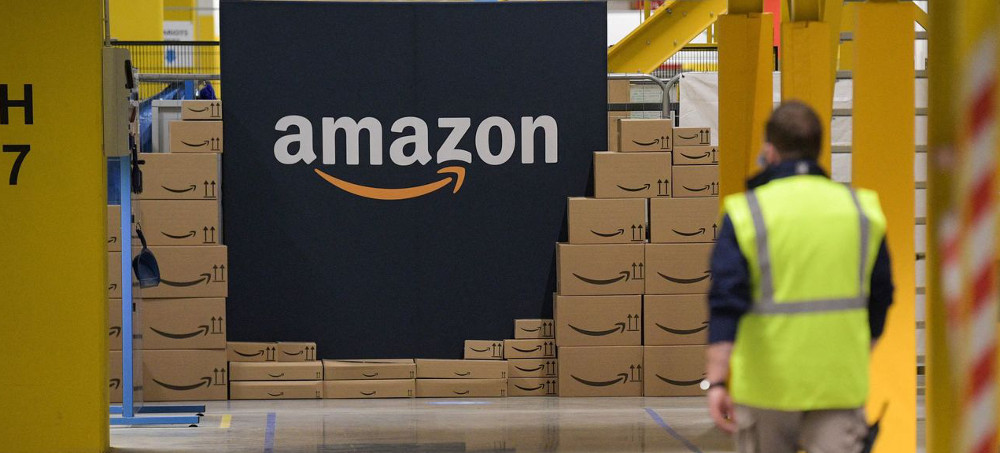 Amazon owned by Jeff Bezos, the second richest man in the world, got $81 billion richer during the pandemic. (photo: Getty)
Amazon owned by Jeff Bezos, the second richest man in the world, got $81 billion richer during the pandemic. (photo: Getty)
The inflation panic is causing some Democrats to pivot from social spending to deficit reduction. That’s exactly the wrong approach.
I have to admit that I previously understated the persistence of the price increases that started showing up last fall. As Yogi Berra is credited with saying, “Prediction is hard, especially about the future.” Still, the fact remains that the most popular explanations for inflation reflect malign political-economic motivations.
First and foremost, we hear that inflation is due to excessive economic stimulus, especially from the eternal enemies of economic stimulus. Hence the outsized political role of Sen. Joe Manchin (D‑W.V.) — the self-styled economic genius who constantly worries about inflation — and the endless nattering of budget hawks. According to this outlook, the federal government (under Trump as well as Biden) gave people too much money, and, as everybody knows, inflation is the result of “too many dollars chasing too few goods.” As usual, what “everybody knows” serves as an inadequate guide.
The dollars chasing goods are reflected in what economists call consumption expenditures. If there are too many dollars, so to speak, then consumption spending would outrun the normal growth of GDP. As economist Dean Baker notes, this has not been the case during the ongoing panic, either in the United States nor in the nations of the European Union, where inflation has been similarly elevated.
Another pandemic effect cited by Baker is the shift within consumer spending from services to goods: less travel and eating out, more staycations and ordering in. Here again, goods producers can adjust, but that takes some time.
This takes us from the demand side — consumer spending — to the supply side. Here the problems are obvious. The pandemic disrupted “supply chains,” i.e. the transactions among firms within industries.
As Josh Bivens of the Economic Policy Institute notes, if one producer is temporarily sidelined, or otherwise forced to cut back production, this provides opportunities for competitors that are not as hampered to jump in with price increases. This dynamic is not a matter of the long-running growth of monopolies, in tech or elsewhere, but a case of temporary market disruptions. Pandemic lockdowns in China — the world’s manufacturing colossus — have been significant, resulting in downstream impacts.
The bottom line, as Bivens shows, is that profits have increased rapidly, while labor costs have not. The profit increase reflects the ability of firms to exploit kinks in the supply chain. Most of these price increases have gone to profits, not to labor.
As Bivens writes, “The historically high profit margins in the economic recovery from the pandemic sit very uneasily with explanations of recent inflation based purely on macroeconomic overheating.”
Converging challenges
One of the functional aspects of capitalism is that such wrinkles tend to work themselves out. If somebody is making unusual profits in a particular niche, others move in to share the bounty and, in time, profits and prices settle back down.
But on top of the pandemic, we also have the war in Ukraine.
The EU is still buying gas from Russia, but uncertainty over oil and gas production has caused spikes in the world price, which has ended up at gas pumps in the United States. In trying to shift oil and gas buying away from Russian sources, our oil-producing “allies” such as Saudi Arabia have been singularly unhelpful.
The other leading supply problem is the curtailment of Ukraine’s grain production, which raises food prices worldwide. Of course, the United States produces most of its own energy and grain, but a rise in world prices allows our domestic producers to take the same ride.
All this takes more time to explain than sensationalist stories about gas prices. No technical story can stand up to heart-breaking tales of families of modest financial means faced with higher rents and higher prices for fuel and basic foodstuffs. There is clearly need for more social spending to help those being hit the hardest by such price increases.
Bivens suggests an excess profits tax as one remedy. Another would be increased benefits in programs such as the Supplemental Nutrition Assistance Program (a.k.a. ‘food stamps’) and unemployment insurance to alleviate inflation effects on lower income families. The federal government could also do something about the high prices of prescription drugs. The impact on overall inflation itself for these remedies is dubious, but it would help if the Democrats showed they were doing something. The most important likely remedy is time, but in politics those who stand back and wait are in for a shellacking.
Otherwise, the U.S. economy has been doing quite well. The miraculous recovery of 2021 puts employment close to the pre-pandemic level in February 2020, after a steep drop of 16 percentage points. Wage growth for lower-income workers, especially people of color, has exceeded growth in prices. Where are the stories of those workers?
There is a media problem and a messaging problem. In general, the media paints a dismal and unbalanced picture of the economy, and the Democratic Party fails to sort out what it has accomplished, what is beyond its control, and what policies are appropriate.
New playbook needed
On the policy front, we have two problems. One is a further indication of misfeasance from the Biden administration, in the form of new blather about the success of deficit reduction. It’s one thing to be blocked from worthwhile reforms like Build Back Better by a couple of intransigent Democratic senators. It’s another to celebrate the results.
This is very much a replay of the Obama 2010 playbook, when his administration failed to cobble together a congressional majority to support its initiatives, failed to note the shortcomings of what had been enacted, and failed to talk about what should have been done instead. Then, in the 2010 midterms, the Democrats, as Obama said, got “shellacked” and lost their majorities in Congress.
Bringing employment back to nearly its pre-pandemic level in a year’s time was a great achievement, but we can do better. Employment should keep up with population growth — and that means 2022 population, not 2020 population.
The other policy issue is the posture of the Federal Reserve, using the hammer it has while defining everything as a nail. By pushing up interest rates in pursuit of inflation reduction, the Fed will end up pushing down employment and GDP growth, while possibly worsening supply-chain difficulties.
This past Thursday, the Commerce Department announced that GDP in the first quarter of this year had declined by 1.4 percent on an annual basis. It’s not news that the stock market has also taken a dive this year, especially this past month, which further retards consumer spending. People feel, and are, less rich — and they spend less as a result.
Even the European Central Bank has pointed out the gap between the incoming Fed bombardment and the problem it is held to address:
“Higher interest rates won’t solve the imbalance between supply and demand, energy prices and base effects that are currently pushing up prices: they won’t make more shipping containers available or boost the supplies of semiconductors and fuel.”
The pandemic relief has been a huge success. Supply-chain disruptions cannot be attributed to the White House, nor repaired by the Fed’s jack-up of interest rates. The economy’s inflation problem is being misdiagnosed and mistreated. All this adds up to a terrible political situation in the run-up to the midterm elections that puts our entire democracy at risk.
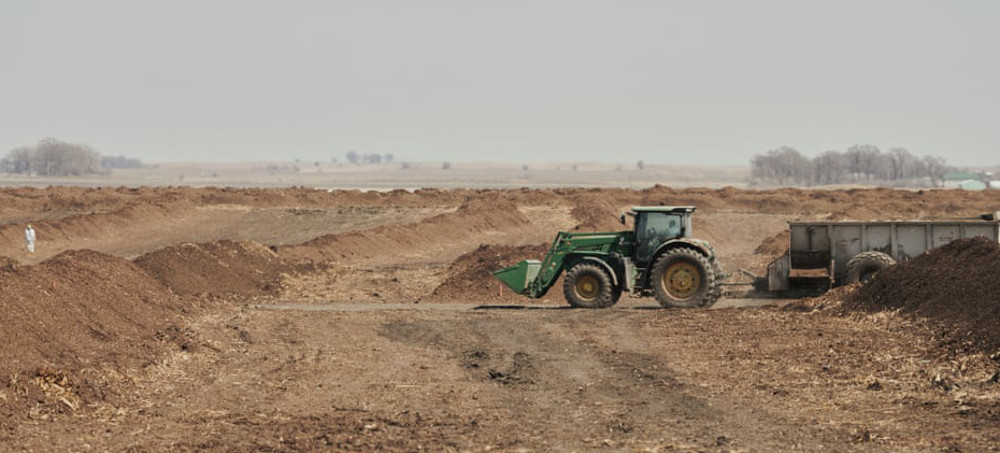 The presumed burial pit of chickens on Rembrandt Foods property. (photo:Dan Brouillette/Guardian)
The presumed burial pit of chickens on Rembrandt Foods property. (photo:Dan Brouillette/Guardian)
Laborers worked for a month disposing of birds killed in a gruesomely inhumane manner. Then they found they too were disposable
As they gathered at the huge barns housing stacks of caged hens, the workers were told to forget about their usual routine of collecting eggs and feeding the birds. Overnight, the factory had begun slaughtering more than 5 million chickens using a gruesome killing method after detecting a single case of avian influenza. Even supervisors were assigned to the arduous task of dragging dead hens out of packed cages as Rembrandt Enterprises raced to contain the spread of the virus, amid the largest bird flu outbreak in the US in seven years.
The culling has been repeated at chicken and turkey farms across Iowa and 28 other states from Maine to Utah. More than 22m birds have been killed in an attempt to contain the outbreak – the majority in Iowa, the US’s biggest producer of eggs. The slaughter of 5.3m hens at Rembrandt is the largest culling at any factory farm in the country.
Workers spent nearly a month pulling the dead poultry from the cages and dumping them in carts before they were piled high in nearby fields and buried in huge pits. The killing over, about 250 people were summarily thrown out of work with just a few dozen skeleton staff remaining.
In the weeks that followed, animal rights protesters targeted Rembrandt’s billionaire owner, Glen Taylor, over the cull, including disrupting games played by the professional basketball team he owns, the Minnesota Timberwolves. But few voices have been raised in support of Rembrandt’s workers, some of them undocumented migrants.
Others fired from the plant contrast the seriousness with which the bird flu outbreak has been taken by Rembrandt’s management to what they describe as the company’s lax approach to the threat to workers from Covid, as it swept through factory farms and slaughterhouses in Iowa and elsewhere.
“Right now everybody’s worried about the chickens,” said Oscar Garcia, a former supervisor at the plant. “We get it: it was really inhumane the way they killed them. But chickens are chickens, right? People worked in those barns pulling out dead birds in terrible conditions, faeces everywhere, doing 12- or 14-hour days.
“They couldn’t protest because then they’d be fired and lose their redundancy pay. Then they’re thrown out of work and no one speaks for them.”
Outside criticism of Rembrandt has focused on the method of killing. Chicken farms have previously slaughtered hens en masse by suffocating them with foam or pumping barns full of carbon dioxide, methods that have been criticized as inhumane.
But Tom Cullen of the Iowa newspaper the Storm Lake Times revealed that birds at Rembrandt were culled using a system known as ventilation shutdown plus (VSD+) in which air is closed off to the barns and heat pumped in until the temperature rises above 104F (40C).
“They cooked those birds alive,” said one of the Rembrandt workers involved in the culling.
An animal rights group, Animal Outlook, used freedom of information laws to obtain records of experiments at North Carolina State University that show that VSD+ causes “extreme suffering” to the hens as they “writhe, gasp, pant, stagger and even throw themselves against the walls of their confinement in a desperate attempt to escape”.
“Eventually the birds collapse and, finally, die from heat and suffocation,” the group said.
Members of another group, Direct Action Everywhere, have disrupted Timberwolves games in recent weeks wearing T-shirts proclaiming “Glen Taylor Roasts Animals Alive”.
James Roth, director of the Center for Food Security and Public Health at Iowa state university’s college of veterinary medicine and an adviser to the federal government on biosecurity, acknowledged that VSD+ causes more suffering than other forms of culling, but said it is the most efficient means of containing the spread of bird flu because it is relatively swift.
“Nobody wants to see it used, but sometimes it is, as a last resort. The rationale is if the influenza virus spreads so fast that it’ll go through a poultry house really rapidly, all of those birds produce massive amounts of virus in the air. Then you have a big plume of virus coming from that house that spreads to other poultry houses. It’s critical to get the birds euthanised before that virus becomes a huge plume of virus to spread,” he said.
Roth said that the authorities appear to have learned important lessons from 2015, when a bird flu outbreak resulted in what the US agriculture department calls “the largest poultry health disaster in US history”, with the slaughter of about 50 million chickens and turkeys.
This time federal regulators moved quickly to contain the outbreak by shutting down the movement of workers between poultry flocks, a significant cause of the spread of avian flu in 2015. But Roth said this year the virus appears to have arrived in the US carried by waterfowl from Europe and to be better adapted to be spread by wild birds, which are harder to contain.
That prompted the USDA to press for a swift culling at infected poultry farms. On 17 March, Rembrandt notified its supervisors that avian flu had been detected on the site.
“They sent out email at 10.30pm letting us know they had a confirmed case,” said a former Rembrandt worker who was obliged to sign a non-disclosure agreement in order to receive redundancy payments.
When the worker arrived the next day he discovered the company had already begun slaughtering millions of chickens.
“Once they’re dead, we had to take them out by hand one by one, put them in a wheelbarrow. That’s really intense manual labour. They are not very big cages. Twelve chickens are crammed in there. Awful conditions,” he said.
“After it was over, we were told to attend a meeting. We walked in. There was a big stack of yellow envelopes. That’s like showing a knife to a chicken. You know what’s going to happen next. We worked ourselves out of a job. I saw people who had years and years of experience just being let go. It was totally unexpected.”
Some workers thought the layoff might be temporary, as it was during the 2015 outbreak. But they were given redundancy payments and told to find other jobs, suggesting the move was permanent and raising questions about the future of the plant.
Some of the skilled former workers have had little trouble finding another job. Others have struggled. “I’m just rushing to find a job in order to support my family,” said a former Rembrandt employee with several years at the company.
Those struggling include undocumented workers who, Garcia said, were hired indirectly through third-party contractors.
In February, the Storm Lake Times reported that a lawsuit by the family of a Guatemalan migrant worker who was crushed to death when cages collapsed on him revealed that he had been working under a false name through a subcontractor.
Garcia also contrasted the seriousness with which Rembrandt took bird flu to the company’s handling of Covid-19 as it surged in Iowa, particularly among labourers working close together on factory farms and in slaughterhouses. He said Rembrandt appeared to care more about avian flu outbreaks than Covid. He criticised the management for failing to require workers to wear a mask or to be vaccinated.
“They actually liked the fact that we didn’t require our employees to get vaccinated, because they were hoping we would get employees from the surrounding areas that were requiring their employees to get vaccinated. They’re using it almost as a recruitment tool,” he said.
Other workers said that when they contracted Covid, they were obliged to use the days off they had earned as holidays instead of being given sick days.
“It’s a company that makes millions of dollars. I guess I shouldn’t be surprised that it doesn’t care about people,” said Garcia.
Rembrandt Enterprises has been approached for comment.
Special Coverage: Ukraine, A Historic Resistance
READ MORE
Follow us on facebook and twitter!
PO Box 2043 / Citrus Heights, CA 95611




No comments:
Post a Comment
Note: Only a member of this blog may post a comment.